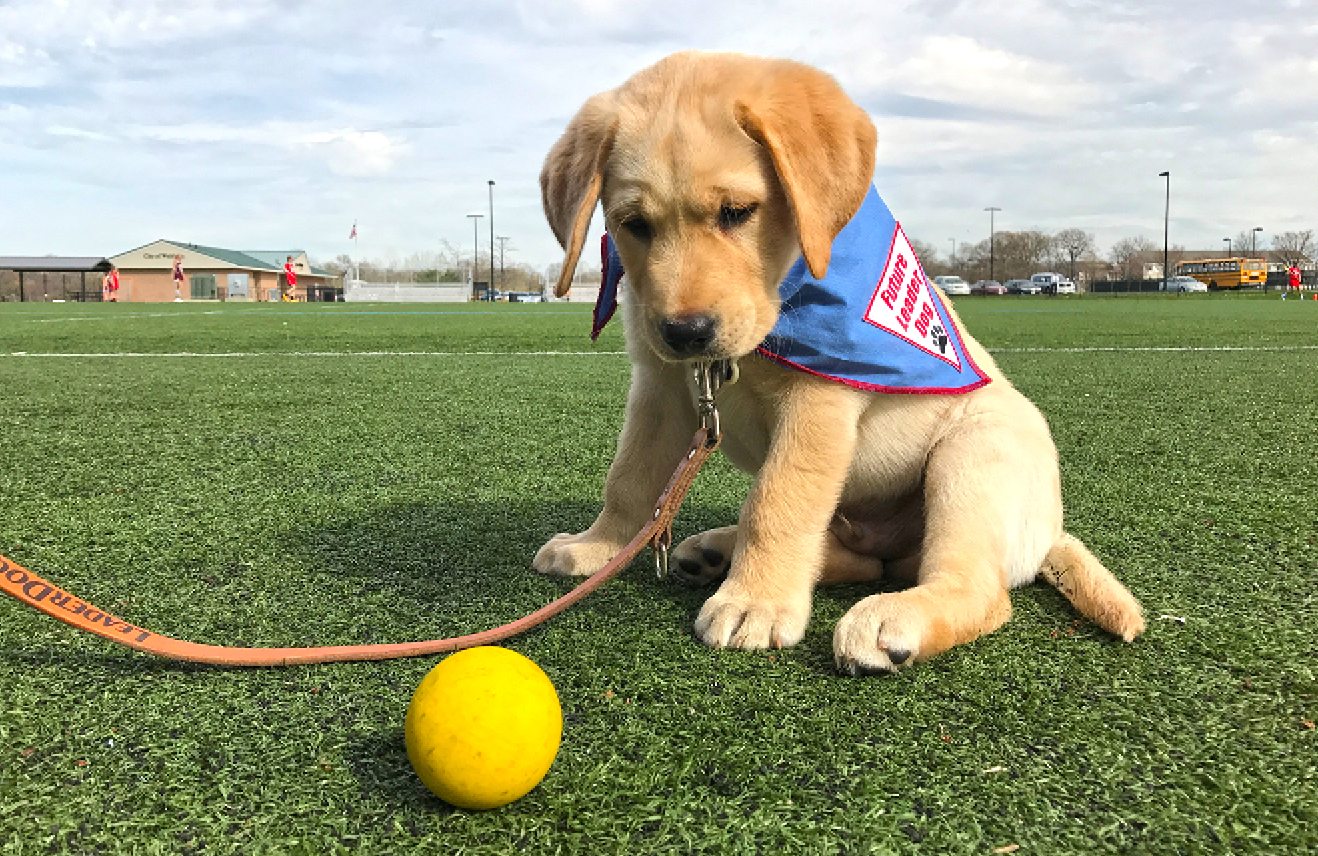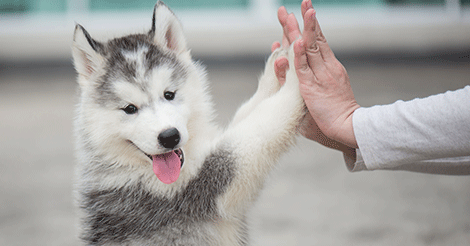Leading Young Puppy Training Strategies to Make Certain a Well-Behaved Pet
Effective young puppy training is crucial for growing a mannerly companion, and numerous strategies can dramatically influence a dog's development. Amongst these, positive reinforcement stands out as a foundational approach, advertising count on and encouraging preferable behaviors. Uniformity in commands and early socialization are just as important, laying the groundwork for a well-adjusted pet. In addition, the functions of cage training and chain etiquette can not be ignored. As we discover these techniques even more, it becomes clear that the success of pup training pivots on a mix of strategies that can change your family pet's behavior in exceptional ways.
Positive Reinforcement Techniques
Utilizing positive reinforcement techniques is vital for efficient young puppy training, as it urges preferred behaviors with incentives instead of penalty. This method exploits on the natural knowing processes of canines, enhancing etiquette by giving substantial and prompt benefits, such as treats, praise, or playtime. By connecting favorable outcomes with specific actions, puppies are most likely to repeat those actions in the future.
Incentives need to be given quickly after the wanted behavior happens to develop a clear link in the pup's mind. Furthermore, differing the types of rewards can keep a young puppy's rate of interest and inspiration throughout the training process.

Uniformity in Educating Commands
Preserving uniformity in training commands is crucial for enhancing the lessons discovered via favorable reinforcement strategies. Dogs thrive on routine and predictability, so making use of the exact same verbal commands and hand signals for certain behaviors is essential. This harmony assists puppies understand what is anticipated of them, minimizing confusion and irritation for both the animal and the trainer.

Timing also plays a significant function in consistency. Commands need to be provided promptly during training sessions and adhered to quickly by positive support, such as treats or appreciation. This instant feedback helps solidify the association in between the command and the preferred habits.
Integrating consistency into training sessions will certainly create a secure discovering environment, advertising quicker mastery of commands. Inevitably, a well-structured technique fosters a solid bond in between the puppy and its proprietor, causing a more well-behaved and obedient pet dog.
Socialization With Other Pet Dogs
Socialization with other family pets is critical for a pup's advancement, as it helps them find out ideal behaviors and interaction abilities in diverse social contexts. Early communications with various pets can substantially influence a pup's character and flexibility in numerous situations. When puppies are revealed to a selection of family pets, they become much more confident and less afraid, which can avoid possible behavioral issues later in life.

Moreover, observing body movement throughout interactions is crucial. Show your puppy to recognize signals from other family pets, such as indications of playfulness or discomfort, cultivating common respect and understanding. Normal socialization not just enhances your puppy's social abilities however also adds to that site their general wellness, developing a much more harmonious living atmosphere. Finally, prioritizing communications with other animals will generate a well-shaped and socially proficient pet.
Crate Training Advantages
Recognizing the many advantages of dog crate training can significantly improve both the young puppy's and owner's experience. Crate training provides a safe and secure and risk-free setting for puppies, ensuring they really feel safeguarded when laid off. This complacency can considerably lower stress and anxiety and stress levels for both the proprietor and the pet.
Furthermore, cages offer as a useful housebreaking device. Puppies naturally avoid staining their resting area, therefore motivating them to hold their bladder until they are allow outdoors. This impulse can accelerate the house-training process, promoting good behaviors early on.
When unsupervised,Crate training likewise helps in taking care of a young puppy's behavior - puppy training. By supplying a marked space, proprietors can protect against destructive actions, such as eating on furniture or getting involved in damaging compounds. Moreover, crates can be advantageous throughout travel, supplying a familiar space that can help relax a puppy in new settings.
Lastly, establishing a pet crate routine encourages self-reliance, allowing puppies to find out just how to be alone without fear. Overall, dog crate training is an efficient method for advertising safety and security, serenity, and technique, bring about a well-adjusted, mannerly animal.
Chain Training Essentials
Leash training is a fundamental facet of responsible animal ownership that ensures a satisfying and risk-free strolling experience for both the pup and its owner. Proper leash training starts early, preferably throughout the pup's socialization duration. When out in read the article public., this training helps establish excellent habits and promotes positive behaviors.
To start, choose a comfortable collar or harness that fits your young puppy well. Connect a strong leash, guaranteeing it is not also long, as this can lead to pulling and irregular habits. Beginning in a silent environment to lessen interruptions and progressively introduce your pup to new environments.
Usage favorable reinforcement strategies, such as treats and appreciation, to motivate your young puppy to walk next to you. If your young puppy pulls, quit strolling and wait for them to return to your side prior to continuing.
In addition, incorporate brief training sessions with enjoyable interruptions to develop your puppy's emphasis. With try this website commitment and determination, chain training will certainly cause an accommodating companion, making walks delightful for both the proprietor and the pup.
Final Thought
In final thought, utilizing reliable young puppy training methods is vital for developing a well-behaved family pet. Overall, these approaches collectively promote an unified connection between young puppies and their proprietors.
As we discover these techniques additionally, it becomes clear that the success of young puppy training hinges on a mix of strategies that can transform your family pet's habits in remarkable means.
Making use of favorable support strategies is necessary for efficient puppy training, as it urges wanted habits through rewards instead than punishment.Crate training likewise aids in managing a young puppy's behavior when without supervision.Leash training is a basic aspect of accountable animal ownership that makes sure a pleasurable and risk-free strolling experience for both the pup and its owner.In final thought, employing efficient puppy training strategies is important for developing a well-behaved family pet.
Comments on “Puppy Training Techniques: Teaching Basic Commands for a Happy Pet”